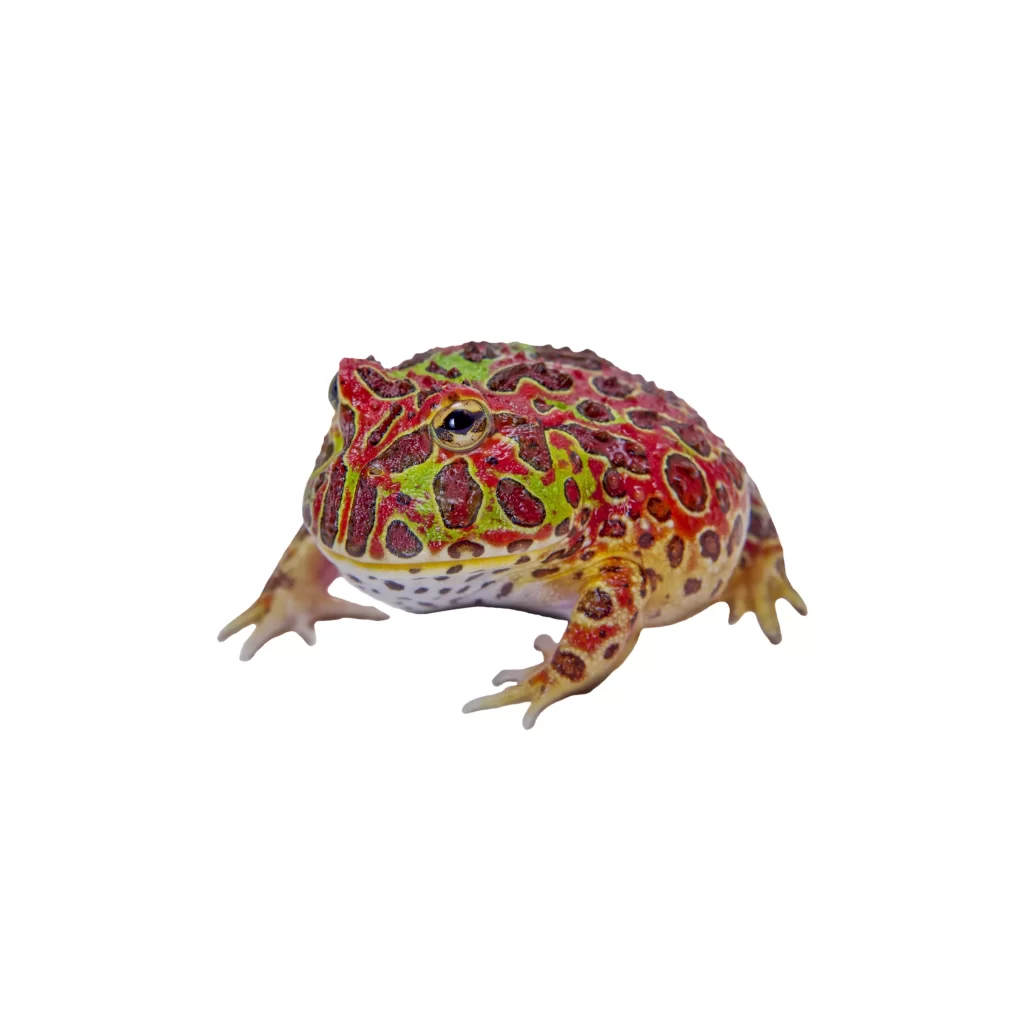🐸 Pacman Frog Handling for Vets and Checkups
Stress-Free Techniques for Safe Veterinary Handling
Pacman Frog Handling for Vets and Checkups - At a Glance
Pacman frogs should only be handled when absolutely necessary, like for vet visits or health checks. Always use clean gloves, minimize handling time, and support the frog’s body gently. Prepare a safe container, maintain humidity, and avoid sudden movements to keep your frog calm and safe.
Pacman frogs aren’t exactly known for their love of cuddles—and for good reason. Their sensitive skin and solitary nature mean that handling should be limited to essential care situations, such as health checks, enclosure transfers, or exotic vet visits.
In this guide, you’ll learn:
When and why handling is necessary
How to handle a Pacman frog safely
What to bring to the vet
How vets can examine frogs properly
Tips to reduce stress during and after checkups
When Is Handling Necessary?
Pacman frogs should only be handled in specific situations, including:
Veterinary visits
Health concerns (e.g., bloating, red belly, impaction)
Quarantine procedures
Enclosure transfers or cleanings
Injury assessment or treatment
👉 How to Tell If Your Pacman Frog Is Sick
👉 Pacman Frog Health Issues and Common Diseases
👉 How to Quarantine a New Pacman Frog

How to Safely Handle a Pacman Frog
Step-by-Step Handling Process:
Wash your hands thoroughly or wear non-powdered nitrile gloves
Moisten hands or gloves with dechlorinated water
Approach the frog slowly from the sides—not from above
Gently scoop under the body with both hands
Support the frog’s underside; avoid squeezing
Keep handling brief—under 5 minutes is ideal
❗ Never handle your frog with dry hands or gloves, as their skin absorbs moisture and is easily damaged by residues or rough textures.
Preparing for a Vet Visit
When transporting your Pacman frog to the vet:
What to Bring:
A secure, ventilated travel container
Moist paper towel substrate (never dry or loose substrate)
Clean, dechlorinated water in a small container or cap
A heating pad (if needed) for colder weather
Notes on feeding, pooping, shedding, and behavior
👉 Pacman Frog Feeding Schedule by Age
👉 What to Do If Your Pacman Frog Has a Red Belly

How Vets Should Handle a Pacman Frog
If your vet is unfamiliar with frogs, share these amphibian-safe guidelines:
Vet Handling Tips:
Always wear moistened gloves
Use minimal restraint; support the frog’s full body
Examine in a dimly lit, quiet space
Check skin condition, mouth health, abdomen, and limb response
Avoid flipping the frog upside down for long periods
Weigh the frog using a shallow, sanitized container
Common Vet Procedures That Involve Handling
| Procedure | Notes for Safe Handling |
|---|---|
| Fecal exams | Gently massage the belly after soaking if needed |
| Oral exams | Use moistened swabs and minimize time mouth is open |
| Injections or fluids | Administer into hind limbs or under skin folds carefully |
| Swab tests | From skin or cloaca—never insert deep into openings |
How to Reduce Stress Before, During & After Handling

Before:
Dim the lights in the room
Mist the enclosure before approach
Minimize environmental noise and movement
During:
Keep movements smooth and predictable
Talk softly or remain silent
Avoid holding the frog for longer than necessary
After:
Return your frog to its enclosure immediately
Allow 24–48 hours of undisturbed rest
Resume feeding only after the frog is settled and responsive
Final Thoughts
Handling your Pacman frog should be rare and purposeful—and always done with gentle, gloved care. Whether you’re taking your frog for a routine checkup or dealing with a health concern, proper handling technique protects your frog’s delicate skin and reduces stress during exams.
FAQ: Handling for Vet Visits
Q: Can I train my frog to tolerate handling?
A: No. Pacman frogs do not become accustomed to frequent handling and should only be touched when necessary.
Q: Can I bring my frog in a plastic deli cup?
A: Yes, if it’s ventilated, clean, and lined with moist paper towel.
Q: Should I feed my frog before a vet visit?
A: No. Avoid feeding 24 hours prior to reduce stress and prevent regurgitation.
